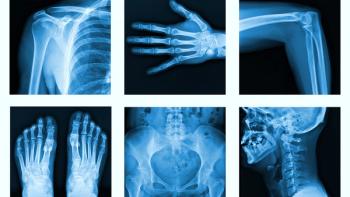
Validating Extractable Substances from Components of Disposable Filtration Assemblies
The many benefits of disposable technologies, such as significant savings in time, labor and capital, as well as ease of scalability and flexibility, have led to the growing trend of adopting disposable technologies in bioprocess manufacturing processes.
Authors: Tongbo Jiang is a senior consulting scientist, Joseph Chartier is an aseptic processing technology manager, and Mark McInnes is IP and disposable solutions technology manager, all at Millipore Corporation, 290 Concord Road, Billerica, MA 01821, tel. 781.533.2689,
Introduction
The many benefits of disposable technologies, such as significant savings in time, labor and capital, as well as ease of scalability and flexibility, have led to the growing trend of adopting disposable technologies in bioprocess manufacturing processes. With the increasing use of single-use technologies, it is necessary to prove their safety. It must be shown that the materials the disposable technologies are made from will not have an adverse effect on the product.
The impact of extractables must be identified, characterized and quantified. Guidelines from the FDA and the EMEA can help define the level of validation and quantification needed for the safety of disposable systems. In addition, suppliers of disposable technologies should offer proof that any potential extractables and leachables from the plastic components do not reach hazardous levels.
The purpose of the study discussed in this article was to provide extractables data relevant to the components of disposable filtration assemblies. Among the components tested were three types of filter devices, and two types of tubing and low-density polyethelene (ULDPE) process containers.
The disposable assembly components were evaluated using model solvent streams designed to simulate a drug product formulation. All components were received gamma-sterilized; no further sterilization was performed. Components were static soaked in water, HCl pH 2.0 and NaOH pH 10.0 for 24 or 336 hours. All extractions were performed at a controlled room temperature (15–30 °C) and extractables were quantified by Total Organic Carbon (TOC) analysis.
Materials
The specific components tested, as well as their materials of construction, are shown in Table 1. The filter devices, tubing, and bioprocess containers that constitute disposable assemblies are organic in nature. In the TOC analysis, the organic components in the respective extractions solutions are oxidized and converted to carbon dioxide. The amount of carbon dioxide present is used to quantify the oxidizable carbon in the sample, and therefore quantify and identify extractables.
Table 1. Assembly components
Component
Description
Materials of construction
Capsule filter
0.22-µm polyvinylidene fluoride (PVDF) membrane in a sterile polypropylene capsule
Capsule filter
0.2-µm polyethersulfone (PES) membrane in a sterile polypropylene capsule
Filter
0.22-µm PVDF membrane in a sterile polycarbonate housing
Tubing
Platinum-cured silicone tubing 3/8-in. (9.5-mm) ID x 5/8-in. (15.9) OD; wall 1/8-in. (3.4 mm)
Tubing
Thermoplastic elastomer tubing, 3/8-in. (9.5-mm) ID x 5/8-in. (15.9) OD; wall 1/8-in. (3.4 mm)
Container
ULDPE process containers, 250 mL, end-ported
Methods
Each type of system component (filter device, tubing, process container) was tested in triplicate.
Each capsule was filled entirely with solvent. Similar volumes of solvent were used to fill the remaining filters for each soak solution. A PTFE resin vessel was filled with the test solution using the highest soak solvent volume as the control. The capsules were allowed to sit undisturbed for at least 24 or 336 hours at a controlled temperature (20–25 °C). Following the extraction procedure, the soak solutions and control solutions were transferred to sample vials and containers for analysis.
Each 150-cm length of tubing was entirely filled with solvent. Similar volumes were used to fill the remaining tubing in each soak solution and a PTFE resin vessel was filled with the control solution. The tubing was allowed to sit undisturbed for at least 24 or 336 hours at a controlled room temperature (20–25 °C). Following the extraction procedure, the soak solutions and controls were transferred to sample vials and containers for analysis and the remaining solutions were retained in storage bottles.
Each disposable bioprocess container (250 mL) was filled with solvent. Similar volumes were used to fill the remaining bioprocess containers in each soak solution and a PTFE resin vessel was filled with the control solution. The bags were allowed to sit undisturbed for at least 24 or 336 hours at a controlled room temperature (20-25°C). Following the extraction procedure, the soak solutions and controls were transferred to sample vials and containers for analysis and the remaining solutions were retained in storage bottles.
Extraction samples were analyzed for TOC. Results of the TOC analysis of the extraction solutions for the 24-hour and 336-hour extractions of the tested components are summarized in Tables 2 and 3. Figures 1 and 2 compare results of the 24-hour disposable assembly component extraction for all three extraction solutions.
Table 2. Comparison of total organic carbon (TOC) results for assembly components
Component
Extraction solvent
Average TOC following 24-hour extraction
(mg C/device)
Average TOC following 336-hour extraction
(mg C/Device)
Capsule filter
0.22-µm polyvinylidene fluoride (PVDF) membrane in a sterile polypropylene capsule
Water
HCl pH 2.0
NaOH pH 10.0
8.1
9.0
9.4
11.5
14.8
12.0
Capsule filter
0.2-µm polyethersulfone (PES) membrane in a sterile polypropylene capsule
Water
HCl pH 2.0
NaOH pH 10.0
24.8
24.6
25.2
27.1
28.6
29.9
Filter
0.22-µm PVDF membrane in a sterile polycarbonate housing
Water
HCl pH 2.0
NaOH pH 10.0
1.1
0.9
1.2
1.4
2.0
1.5
Tubing
Platinum-cured silicone tubing 3/8-in. (9.5-mm) ID x 5/8-in. (15.9) OD; wall 1/8-in. (3.4 mm)
Water
HCl pH 2.0
NaOH pH 10.0
0.0 (0.026)*
0.0 (0.017)
0.0 (0.035)
0.0 (0.040)
0.1 (0.076)
0.1 (0.082)
Tubing
Thermoplastic elastomer tubing, 3/8-in. (9.5-mm) ID x 5/8-in. (15.9) OD; wall 1/8-in. (3.4 mm)
Water
HCl pH 2.0
NaOH pH 10.0
0.4
0.4
0.5
1.1
1.1
1.3
Container
ULDPE process containers, 250 mL, end-ported
Water
HCl pH 2.0
NaOH pH 10.0
6.7
6.2
5.5
3.1
3.7
3.3
*Raw data (average of 3) are shown in parentheses. Results are rounded to one decimal place.
Table 3. Total organic carbon (TOC) results normalized for component extractable surface area
Component
Extraction solvent
Average TOC following 24-hour extraction
(mg C/m2)*
Average TOC following 336-hour extraction
(mg C/m2)
Capsule filter
0.22-µm polyvinylidene fluoride (PVDF) membrane in a sterile polypropylene capsule
Water
HCl pH 2.0
NaOH pH 10.0
26.1
29.0
30.3
37.1
47.7
38.7
Capsule filter
0.2-µm polyethersulfone (PES) membrane in a sterile polypropylene capsule
Water
HCl pH 2.0
NaOH pH 10.0
34.4
34.1
35.0
37.6
39.7
41.5
Filter
0.22-µm PVDF membrane in a sterile polycarbonate housing
Water
HCl pH 2.0
NaOH pH 10.0
11.0
9.0
12.0
14.0
20.0
15.0
Tubing
Platinum-cured silicone tubing 3/8-in. (9.5-mm) ID x 5/8-in. (15.9) OD; wall 1/8-in. (3.4 mm)
Water
HCl pH 2.0
NaOH pH 10.0
1.3
0.9
1.8
2.0
3.8
4.1
Tubing
Thermoplastic elastomer tubing, 3/8-in. (9.5-mm) ID x 5/8-in. (15.9) OD; wall 1/8-in. (3.4 mm)
Water
HCl pH 2.0
NaOH pH 10.0
8.9
8.9
11.1
24.6
24.6
29.0
Container
ULDPE process containers, 250 mL, end-ported
Water
HCl pH 2.0
NaOH pH 10.0
148.9
137.8
122.2
68.9
82.2
73.3
*Results shown are based on published or calculated component surface areas, as follows:
Capsule filter with PVDF membrane = 0.72 m2
Capsule filter with PES membrane = 0.31 m2
PVDF membrane in polycarbonate housing = 0.10 m2
ULDPE process containers = 0.020 m2
Tubing = 2πrh = (2)*(3.14159)*(0.475)*(150) = 447.68 cm2 or 0.045 m2
Discussion
Two sets of selected individual components that could be used in disposable assemblies for bioprocessing or pharmaceutical applications were extracted in three different aqueous solvents over a pH range of 2.0 to 10.0.
Data presented in Table 2 may help determine the contribution to total extractables of individual disposable assembly components for three aqueous solvents under two static extraction conditions.
The filtration devices represented the largest single contributor to extractables (having the largest surface areas), while the contribution of the disposable bioprocess container was extremely low. Under these experimental extraction conditions there was very little difference in the level of extractables among the three aqueous solvents, demonstrating wide pH compatibilities of the materials within the range tested.
In addition, the levels of extractables increased only slightly for each component from 24 to 336 hours of static extraction, except in the case of the silicone tubing where the 336-hour extraction solution showed decreased TOC levels. It is possible that some volatile extractable material, possibly a byproduct of the gamma irradiation, permeates through the silicone tubing over the extended extraction time while it is retained by the thermoplastic elastomer tubing.
In order to verify the results for the silicone tubing, a second study was conducted on new, gamma-irradiated samples. A similar static soak for 24 or 336 hours at room temperature was performed using water as the extraction solution. Again, TOC levels for the 336-hour extraction solution were lower than for the 24-hour samples (data not shown). As a further check, a set of tubing samples was heated at 45°C for 48 hours before extraction. TOC levels for both the 24- and 336-hour extraction solutions from these preheated samples were very low, similar to those levels seen in Table 2 for the 336-hour samples. It seems likely, therefore, that a volatile substance is initially present in the silicone tubing following gamma irradiation and then dissipates over time.
The surface-area normalized data in Table 3 could aid in determining the level of extractables expected from disposable assembly components of various dimensions (i.e., components differing in extractable surface area). As the data suggest, the silicone tubing generates the largest amount of the extractables per unit of surface area.
Acknowledgement
The authors would like to acknowledge Robert Kindya for his contributions to this work.
Newsletter
Stay at the forefront of biopharmaceutical innovation—subscribe to BioPharm International for expert insights on drug development, manufacturing, compliance, and more.




